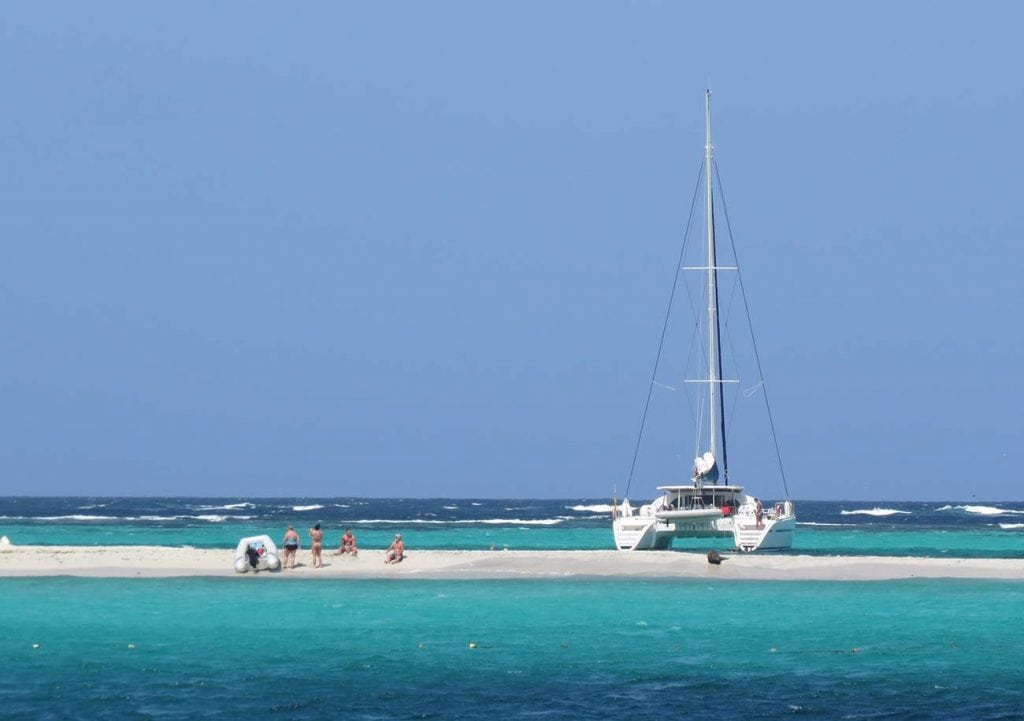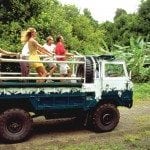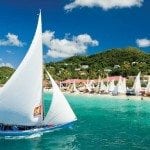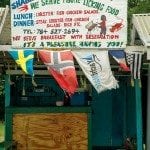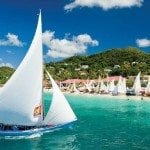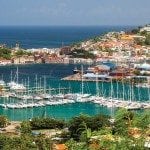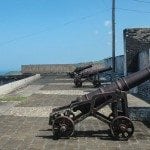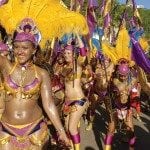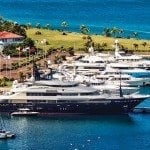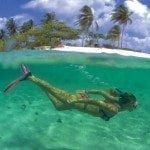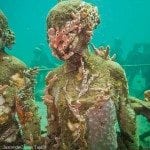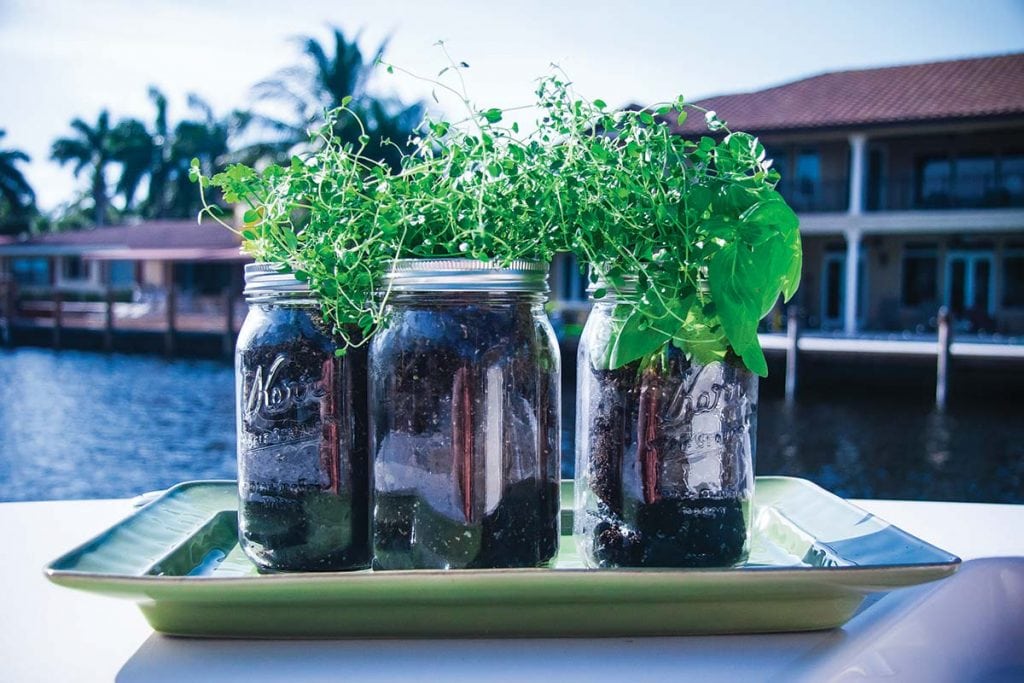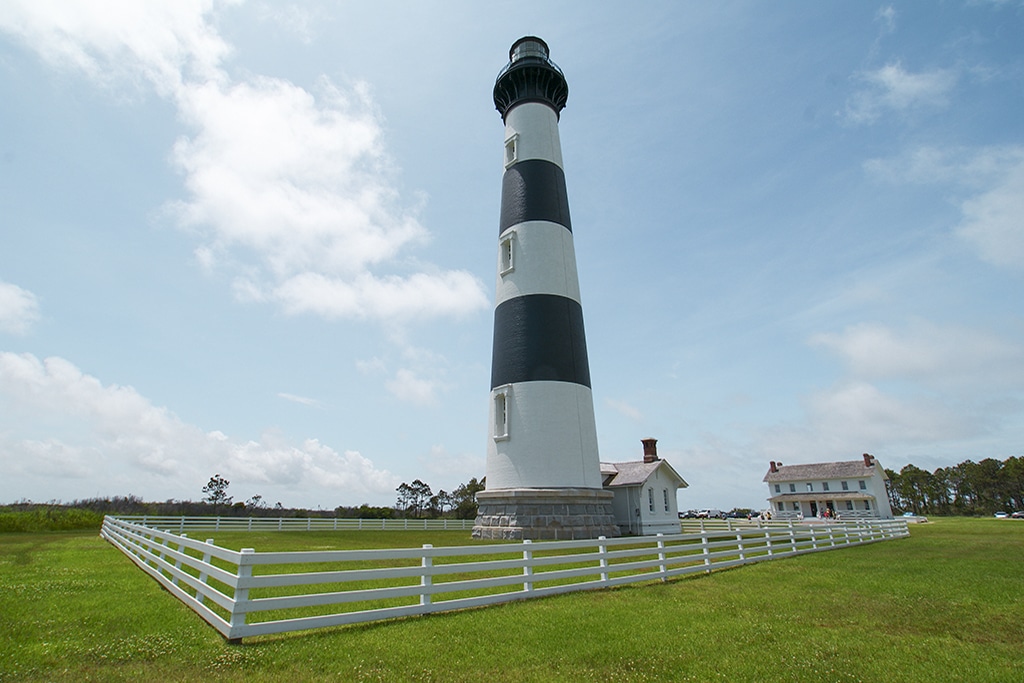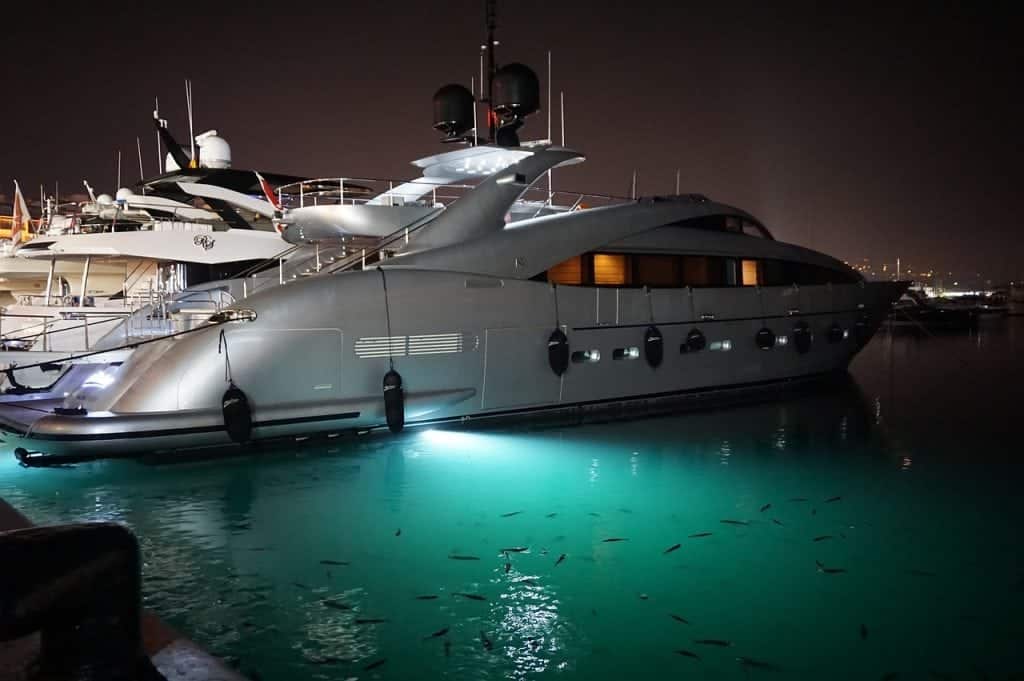Civilization Redefined
The islands of St. Vincent and the Grenadines form one country that stretches along 40 miles of the eastern Caribbean in a northeast-southwest direction. The better known gem-like Grenadines include Bequia, Mustique, Canouan, Tobago Cays, Mayreau, and Union Islands. But there are many spits of sand and one-boat anchorages to drop the hook, feel the trade winds on your skin and ponder the meaning of civilization from the shady comfort of the cockpit.
We make much of the term “civilization”, as if it signals a respite from an otherwise inhospitable environment. The word means different things to different people. For some, it’s WiFi, lattes, rental cars, and restaurants. For me, it’s a capable boat, cool drinks, aquamarine waters, and friendly locals, which aptly describe this island country.
St. Vincent is a lush island and a convenient jumping-off point to the Grenadines when arriving from the north. (If chartering, it’s best to start in Grenada to the south where many charter companies are based.) There’s much to do ashore on the big island. Fort Charlotte overlooks Kingstown. Take a guided tour of the botanical gardens with exotic plants and the St. Vincent parrot whose blue, green and yellow plumage inspired the country’s flag. Guides for hire bring the garden to life with good humor and education so that even the flora-challenged enjoy the scenery.
A nice place to catch a mooring before departing for points south is near Young Island at the bottom of St. Vincent. A nearby rocky pinnacle is home to the ruins of Fort Duvernette. Climb the 255 steps to inspect the cannons and the views from the top before getting under way.
An easy run south is beautiful Bequia (pronounced Bek-way), the largest and northernmost of the Grenadines. The friendly English-speaking population is very welcoming. Bequia’s Admiralty Bay provides lots of easy anchoring and moorings off the beach of Port Elizabeth. The islands’ “boat boy” culture involves men and women entrepreneurs who come out in their small boats to assist with hooking up to a mooring ball, deliver fresh baked goods, haul away trash, or deliver ice. Tip them well and they’ll take care of nearly anything you need.
Shopping in Port Elizabeth is colorful; bright T-shirts flap in the breeze outside vibrant gift shops. Street vendors offer everything from fruit and locally made jewelry to boating souvenirs carved from coconuts. Stroll down Belmont Walkway, a stone path along the bay lapped by the waves and lined with cafes and bars. It’s almost window-shopping for a place to relax; we like the Whaleboner Bar followed by Mac’s for pizza.
Mustique is a 10-mile jaunt southeast, a mostly private island with vacation homes for the rich and famous. You cannot anchor here and must take a $200 EC ($75 U.S.) mooring. A highlight is Basils’ Bar and a golf cart tour of the islands. The best time to visit is during the Mustique Blues Festival, usually held in January.
From Mustique, it’s 21 miles with a beam wind to Horsesho e Reef which surrounds the Tobago Cays. Postcard vistas of white sand beaches and swaying palm trees make up the mostly uninhabited cays where every angle presents a paradise of kaleidoscope colors. The four idyllic islands hide in protected waters. They were designated as a national marine park in 1998 so rangers ask for $10 EC (40 cents U.S.) per person per day, which is a fair price for guardianship of the area.
There are few distractions here and no nightlife other than the odd beach BBQ coordinated by the boat boys. The spectacular reef provides mostly protected water, and great snorkeling is near the roped-off sanctuary off Baradel Island; rays glide by and turtles feed on grass so close that you can hear them munching as they graze.
Parts of Pirates of the Caribbean were filmed in the Cays, so if you take your camera and troll the various beaches, you might find a few angles that look like Captain Jack Sparrow is about to swagger around the corner. Remote and pristine, the Cays are about bringing your swimsuit, a good book, cooler of beer, and forgetting the world for a while.
With good light and eyes focused on the crystalline water, it’s possible to thread the unmarked reefs and head out of the Cays’ southern entrance enroute to Union Island, a mere three miles away. Its highest peak, Mt. Parnassus, is nearly 900 feet so you can’t miss it. The main town of Clifton provides great provisioning with an open-air produce market and several grocery stores that sell gourmet coffee, chocolate and bread. A sundowner at Janti’s Happy Island in the harbor is mandatory and can only be reached via dinghy because it was built on the reef out of thousands of conch shells gathered by Janti himself. Clifton is on the windward side and if the weather is a bit sporty, it may be time to hide in Chatham Bay on the western end. This large bay with a long beach has multiple shack-style restaurants advertising lobster dinners.
When Columbus plied Caribbean waters, St. Vincent was known by its inhabitants as Hairoun, which means “home of the blessed”—it’s also a brand of a popular local beer. The region had a tumultuous history and was settled by various groups including the peaceful Arawak Indians, the not-so-peaceful Carib Indians and a mixed bag of Europeans who ping-ponged the region’s ownership back and forth for hundreds of years. Missionaries, wrecked slave ships and rumors of cannibalism made for colorful, if grim, beginnings. A succinct synopsis of the islands’ evolution is told and retold with imaginative flair by proud locals who tend to insert their own “historical facts”.
The postcard-perfect Grenadines differ from one another and you can experience a wide variety of terrain and culture in a compact area. It’s such a unique location that once is not enough when visiting these quintessentially Caribbean islands. I, for one, will be back soon, since civilization in the literal sense is overrated, but civilization redefined is sublime.
INSIDER TIP:
Any time is a good time to visit the Windward Islands since temperatures hover around 80 degrees Fahrenheit and the trade winds blow a refreshing breeze year-round. Many cruisers slip down to Grenada just south of the Grenadines during hurricane season (June to November); some insurance companies consider it to be below the hurricane belt.
Outside of the Blue Lagoon at the southern tip of St. Vincent, there aren’t many marinas in the Grenadines. Mooring fields are plentiful with prices ranging $20-45 EC. The best selection of charter yachts, including power catamarans from The Moorings, is in Grenada. Sunsail, Moorings and Dream Yacht all have bases in St. George’s. Note: check-in and check-out is needed when cruising between the Grenadines and Grenada, which are separate countries.
Provisioning is good especially on Bequia and Union Islands. Local grocers can be a fun exploration of items like sugar apples, durian, callalou, wax apples, and soursop.
GRENADINES CRUISER RESOURCES:
MARINAS:
Blue Lagoon Hotel & Marina
Ratho Mill
St. Vincent & the Grenadines
+1 (784) 458-4308
Port Louis Marina
St. Georges, Grenada
+1 (473) 435-7432
CHARTER COMPANIES:
-Dream Yacht Charters; dreamyachtcharter.com-Sunsail Charters; sunsail.com
-The Moorings; moorings.com
PROVISIONING:
Captain Gourmet
Clifton, Union Island
+1 (784) 458-8918
Doris’ Fresh Food
Port Elizabeth, Bequia
+1 (784) 458-3625
Island Grown
Clifton, Union Island
+1 (784) 529-0935
MARINE SERVICES:
Daffodil Marine Service
Port Elizabeth, Bequia
+1 (784) 458-3992
By Zuzana Prochazka, Southern Boating September 2016


